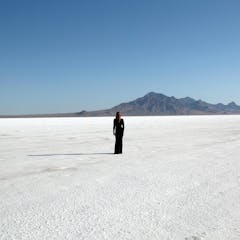
Articles on Anthropocene
Displaying 1 - 20 of 128 articles

Scientists Jan Zalasiewica and Erle Ellis on the recent decision to reject a proposal for a new geological epoch, the Anthropocene. Listen to The Conversation Weekly podcast.

The idea cannot be stopped, even if geologists have voted not to recognise a new epoch.

The recent rejection of the start of the Anthropocene epoch reminds us of the paramount importance of preserving what remains of our current Holocene.

Geologists recently voted down a proposal to formally recognise the Anthropocene.

Scientists have been debating the start of the Anthropocene Epoch for 15 years. I was part of those discussions, and I agree with the vote rejecting it.

As space travel and lunar exploration becomes a near-future reality, we should consider the impact of human activities on the lunar environment.

Hermit crabs have been using plastic waste such as bottle tops as homes instead of empty snail shells.

Sarah Nance uses geologic data and a variety of artistic media to help people think about their place in the landscapes they use and occupy.

‘Somebody has to do something’: Top feature film and documentary picks from scholars examining climate change and cinema offer courage to hold contradictory truths and pursue climate solutions.

The Anthropocene began quickly, but will last deep into the geological future.

Humanity’s ecological footprint takes many different and interconnected forms that are all getting worse.

Britain has lost large areas of semi-natural habitat since the 1930s.

Our relationships with the natural world have changed, and addressing how we understand our place in the world will help us find solutions to current environmental crises.

The way we develop urban peripheries is central to tackling both the housing crisis and the climate emergency.

Integral ecology, a holistic way of looking at problems the world faces today, is key in the pope’s writings about the environment.

We used satellite data to create global maps of where and how fires are burning. Fire season lasts two weeks longer than it used to and fires are more intense. But there are regional differences.

We’re having a big impact on the planet. But what marks will we leave behind in deep time?

Long before thermometers, nature left its own temperature records. A climate scientist explains how ongoing global warming compares with ancient temperatures.

What is so special about Crawford Lake? And what can it teach us about the urban spaces we live in?

Our activities now affect the entire planet. But there’s a vital debate over when we started disrupting these systems. Was it 1950 – or hundreds and thousands of years earlier?
